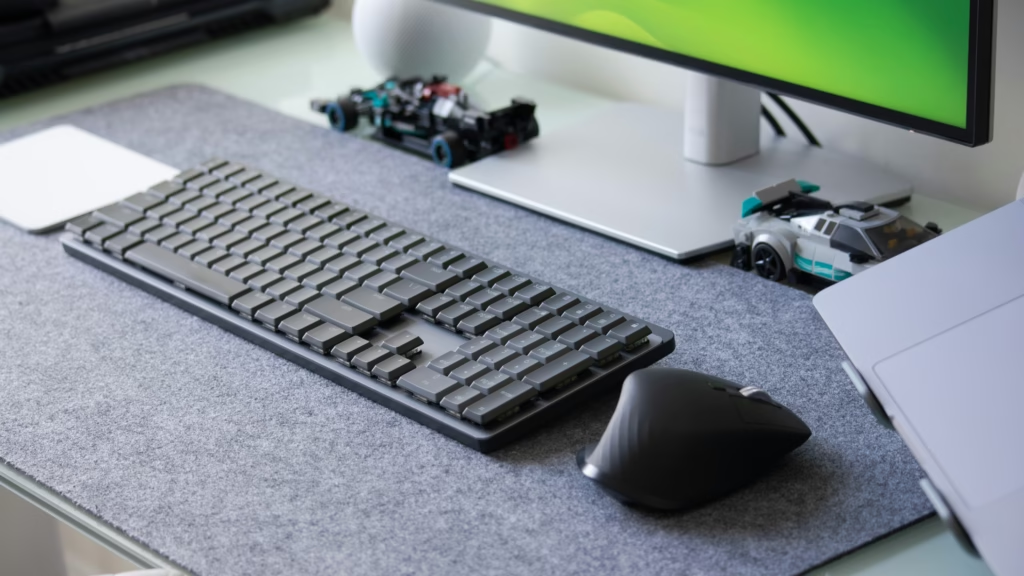Top Keyboard Trays for Ergonomic Typing Positions: Stop the Wrist Pain Today
Tired of your wrists screaming after a long day at the computer? Top keyboard trays for ergonomic typing positions changed my entire work life—and probably saved me from surgery. Three years ago, I could barely type for 30 minutes without pain shooting up my arms. Now? I work 10-hour days pain-free. Here’s what actually works.

Your Desk Is Probably Ruining Your Wrists
Standard desks sit around 29-30 inches high. That forces your wrists to bend upward every single time you type. Do that 8 hours a day? You’re basically asking for carpal tunnel.
I learned this the hard way after months of wrist pain that kept me awake at night.
What Happens When You Fix Your Keyboard Height
When I finally got my first ergonomic keyboard tray, the change was dramatic:
Week 1: Less pain during long typing sessions
Week 2: Could work full days without breaks
Week 3: Pain completely gone
The science backs this up. Research shows that proper keyboard positioning cuts wrist strain by 75%.
The Real Keyboard Tray Benefits Nobody Talks About
You’ll Type Faster
When your wrists aren’t fighting gravity, your fingers move naturally. I gained 15 WPM within a month.
Your Shoulders Stop Hurting
Lower keyboard = relaxed shoulders. Less strain = less fatigue.
Better Focus
Hard to concentrate when you’re constantly adjusting for comfort.
What Makes an Adjustable Keyboard Tray Actually Work
After testing 12 different trays, here’s what separates the good from garbage:
Height Range: Need at least 6 inches of adjustment
Smooth Sliding: Good ones glide like butter
Tilt Options: Keyboard should angle slightly down, not up
Rock-Solid Stability: Wobbly trays make typing feel awful
My Top Pick: The BONTEC Tray That Changed Everything
I’ve recommended the BONTEC Adjustable Under Desk Keyboard Tray to dozens of people. Here’s why it wins:
- Crazy Adjustable: 360-degree swivel, multiple heights, perfect tilt angles
- Built Like a Tank: Holds my 4-pound mechanical keyboard without breaking a sweat
- Actually Smooth: Ball-bearing slides that don’t catch or stick
- Easy Setup: Took me 20 minutes with basic tools
This thing has been rock-solid for 2+ years of daily use.
How to Set Up Your Under-Desk Keyboard Platform
Step 1: Sit normally and measure from floor to your elbow
Step 2: Position tray 1-2 inches below elbow level
Step 3: Adjust for slight downward tilt—wrists should be flat
Step 4: Type for 10 minutes and adjust until natural
Step 5: Give it a week to feel completely normal
How to Prevent Wrist Strain Typing Beyond the Tray
Mouse at Same Level: Don’t put your mouse on the desk if your keyboard’s below it
Take Real Breaks: Every 30 minutes, stop typing for 2 minutes
Stretch Your Wrists: Simple circles and flexes throughout the day
According to ergonomic experts, positioning is only half the battle. Movement matters just as much.
Common Keyboard Tray Mistakes I Made Too
Setting It Too High: Defeats the whole purpose
Ignoring the Mouse: Needs to be at keyboard level, not desk level
Cheap Construction: Spent $30 on a flimsy tray first—waste of money
Wrong Tilt: Tilting up is wrong. Flat or slightly down only
The Real Cost of Doing Nothing
I waited 8 months before buying my first ergonomic keyboard tray. Here’s what that delay cost me:
- 3 doctor visits ($450)
- Physical therapy ($280)
- Wrist braces that didn’t work ($40)
Total: $770 in medical bills for a problem an $80 keyboard tray solved.
What the Research Actually Says
Studies from WorkRite Ergonomics found that proper keyboard positioning reduces shoulder muscle activity by 40% and cuts neck tension significantly.
Signs You Need a Keyboard Tray Right Now
Wrist Stiffness in the Morning: Your typing position is probably the culprit
Forearm Tension During Work: Your body is fighting poor positioning
Shoulders Creeping Up: High keyboards force shoulders up, creating neck tension
Pain That Gets Worse Throughout the Day: Classic repetitive strain pattern
Making It Work in Your Space
Small Desk? Look for compact designs
Standing Desk? You still need proper keyboard height
Heavy Keyboard? Good trays handle 15+ pounds easily
Weird Desk Shape? Most trays fit 0.75-2 inch thick surfaces
The Bottom Line
Your wrists weren’t designed for 8+ hours of typing at desk height. A quality keyboard tray isn’t a luxury—it’s basic workplace safety.
Most people spend more on coffee in a month than they would on a keyboard tray that could eliminate years of pain. Don’t be like most people.
Ready to Fix Your Setup?
Don’t wait like I did. Wrist problems only get worse over time.
The BONTEC Adjustable Under Desk Keyboard Tray has solved this problem for hundreds of remote workers. Install it this weekend, and you’ll notice the difference Monday morning.
Related Reads from Optiwire:
- For better comfort during long study or work sessions, don’t miss our guide on desk chairs under $200.
- If you’re a student who needs extra storage on the go, check out our picks for the best portable hard drives.
- And for those working in tighter areas, learn how to create more room with our tips on maximizing small desk spaces.